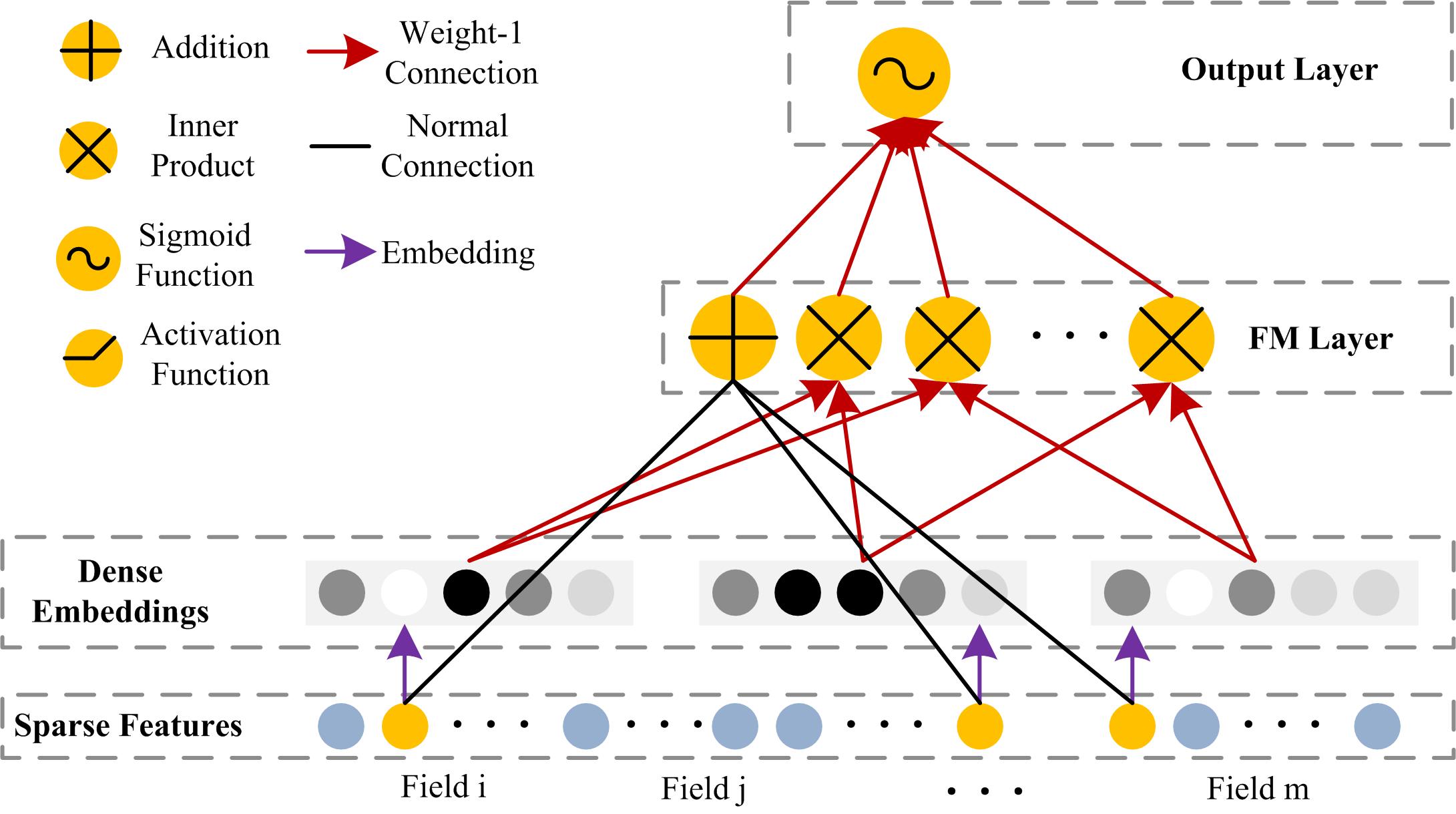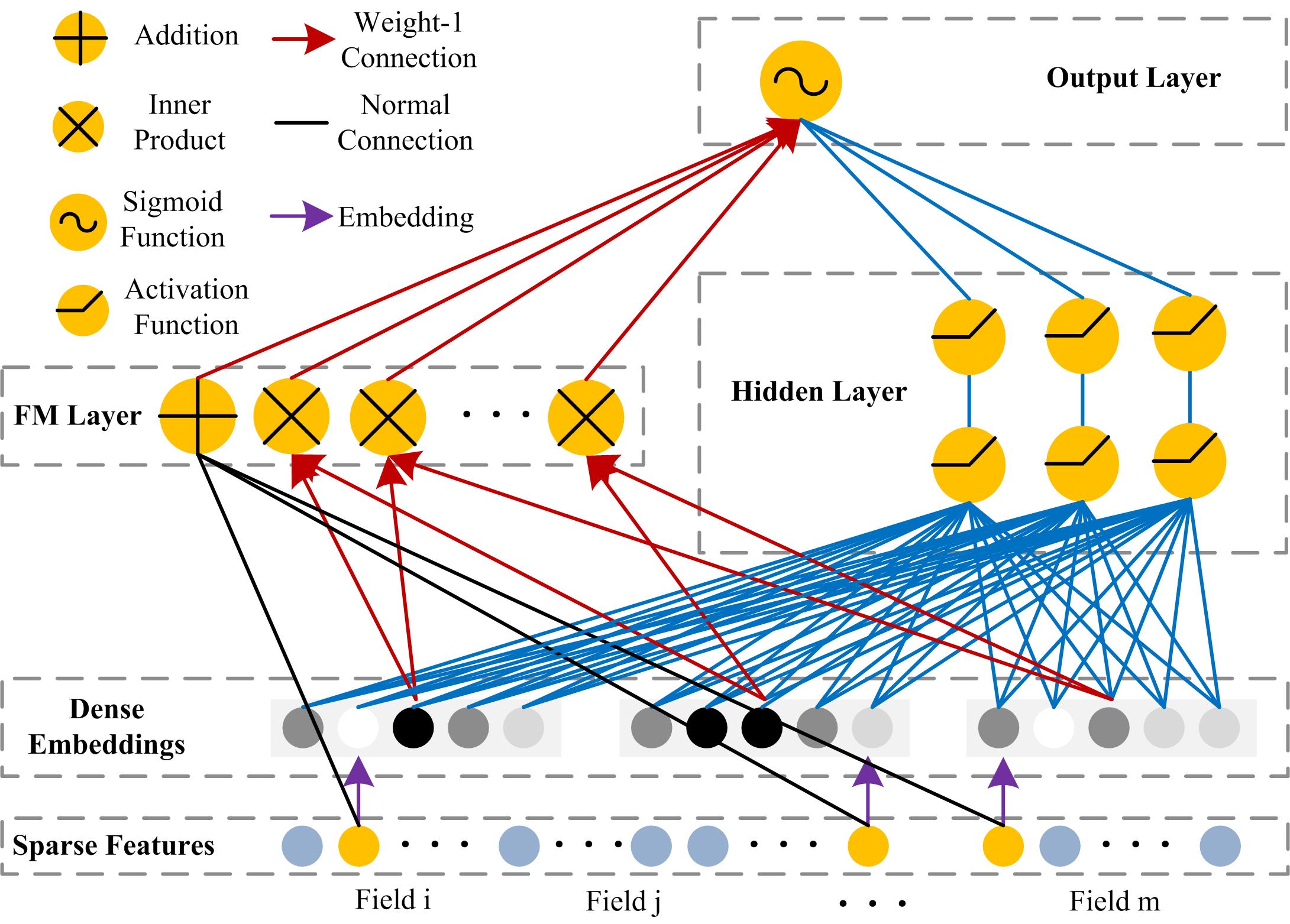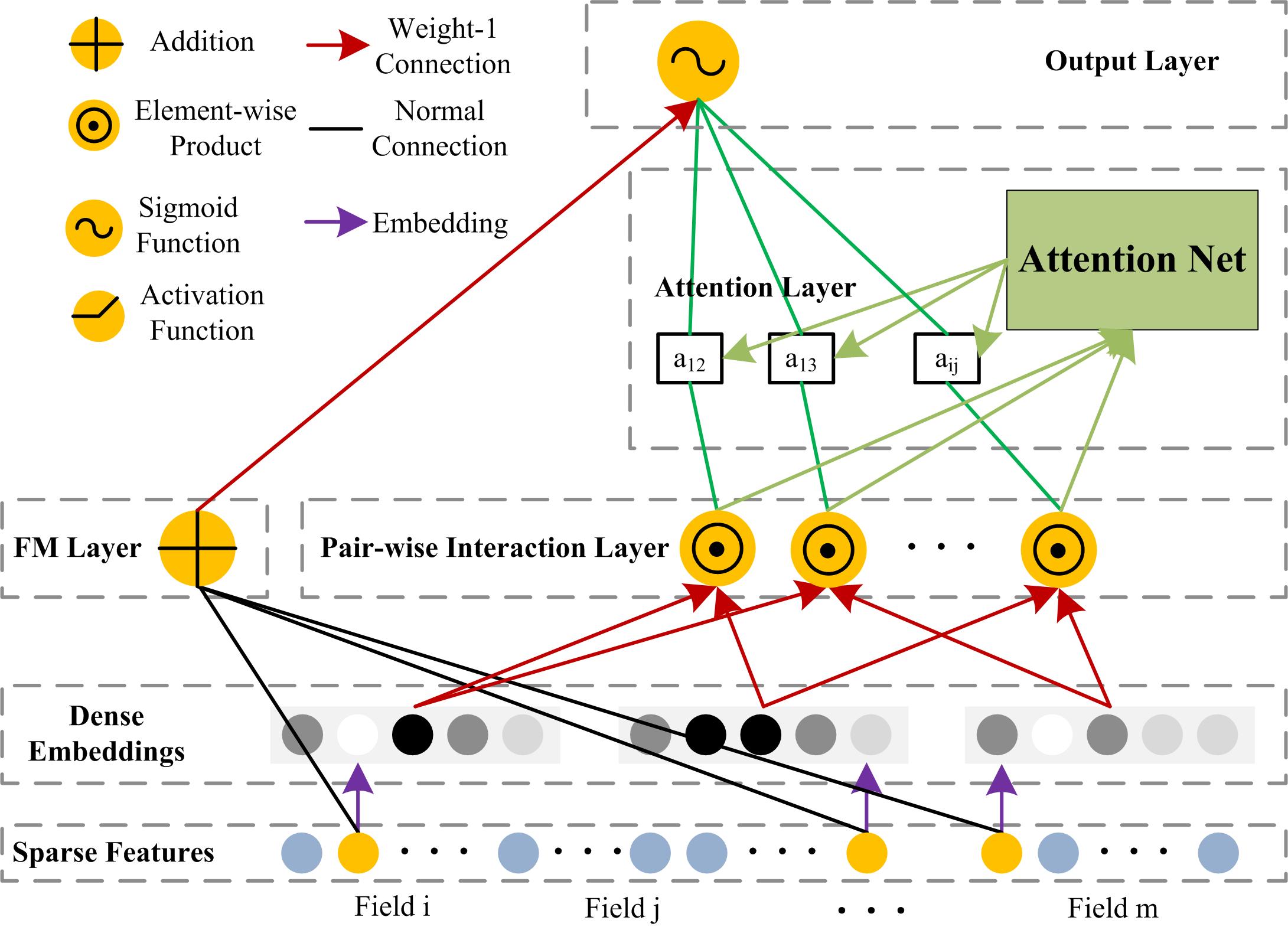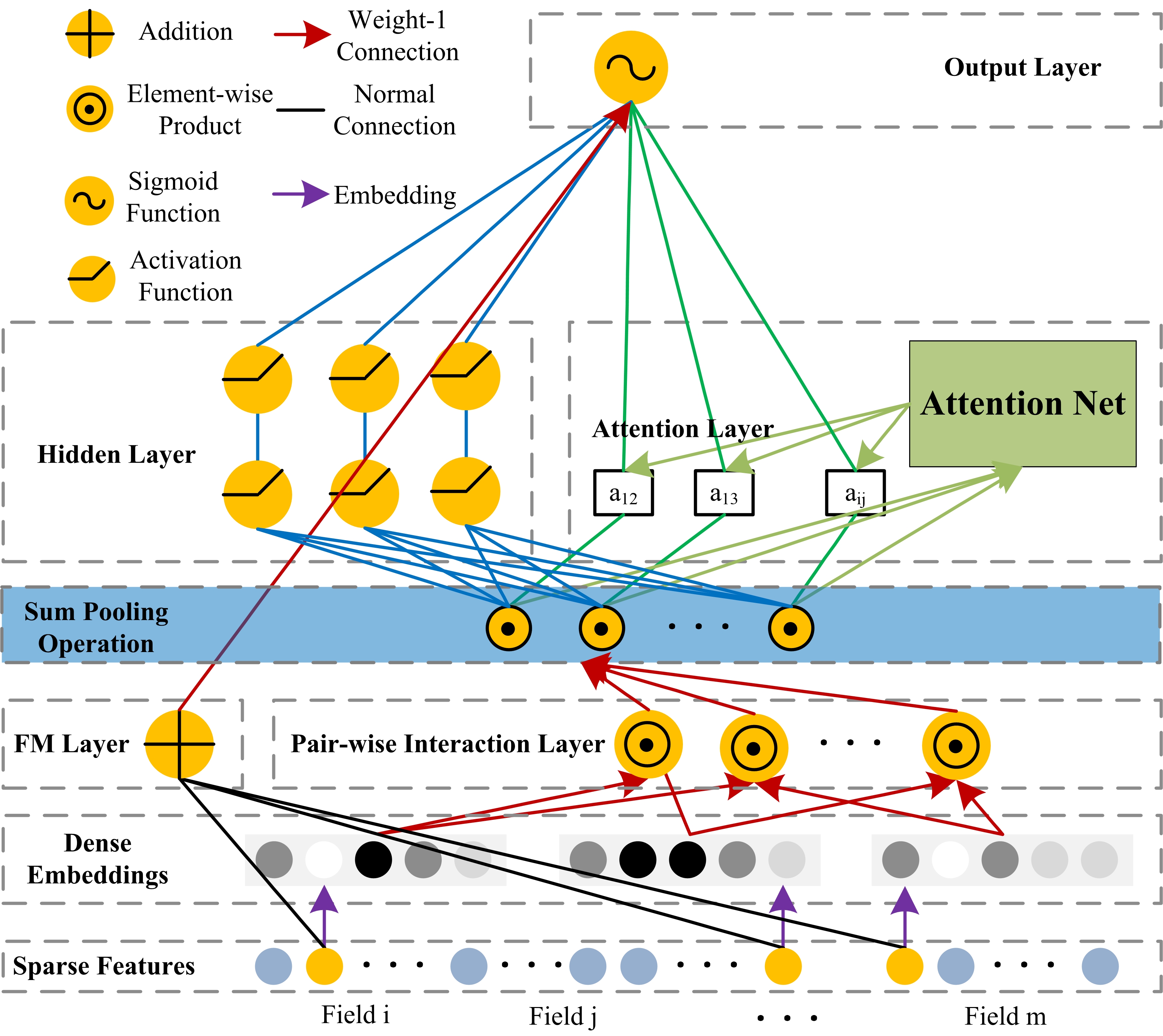This repository is the Python implementation with tensorflow 1.4.0 for the ICWS 2020 accepted paper:
Guosheng Kang, Jianxun Liu, Buqing Cao, Manliang Cao. "NAFM: Neural and Attentional Factorization Machine for Web API Recommendation". IEEE International Conference on Web Services. 2020, pp. 330-337.
1. Characteristics of the dataset
| Item | Values |
|---|---|
| Number of Mashups | 6206 |
| Number of APIs | 12919 |
| Number of invocations | 13107 |
| Average number of invocations per Mashup | 2.11 |
| Number of called APIs | 940 |
| Called proportion of APIs | 7.28% |
| Number of interactions | 9297 |
| Number of labeled Mashup tags | 18601 |
| Number of Mashup tags | 403 |
| Number of labeled API tags | 44891 |
| Number of API tags | 473 |
| Average length of Mashup description | 27.63 |
| Average length of API description | 68.98 |
| Number of Mashups with included APIs | 5341 |
| Sparsity of Mashup-API matrix | 99.81% |
| Number of API category | 383 |
| Number of Mashup category | 312 |
| Number of API/Mashup categories | 427 |
Run programme dataset_characteristics.py to generate the above statistical data.
2. Integrating FM Model with Deep Learning Models
3. FM Model based Applications for Web API Recommendation
-
basicFM
- B. Cao, B. Li, J. Liu, M. Tang, and Y. Liu, “Web APIs Recommendation for Mashup Development based on Hierarchical Dirichlet Process and Factorization Machines,” International Conference on Collaborative Computing: Networking, Applications and Worksharing, 2016, pp. 3-15.
- M. M. Rahman, X. Liu, and B. Cao, “Web API Recommendation for Mashup Development Using Matrix Factorization on Integrated Content and Network-based Service Clustering,” 2017 IEEE International Conference on Services Computing (SCC), 2017, pp. 225-232.
- B. Cao, B. Li, J. Liu, M. Tang, Y. Liu, and Y. Li, “Mobile Service Recommendation via Combining Enhanced Hierarchical Dirichlet Process and Factorization Machines,” Mobile Information Systems, vol. 2019, 2019.
-
DeepFM
- X. Zhang, J. Liu, B. Cao, Q. Xiao, and Y. Wen, “Web Service Recommendation via Combining Doc2Vec-based Functionality Clustering and DeepFM-Based Score Prediction,” 2018 IEEE Intl Conf on Parallel & Distributed Processing with Applications, Ubiquitous Computing & Communications, Big Data & Cloud Computing, Social Computing & Networking, Sustainable Computing & Communications, 2018, pp. 509-516.
-
AFM:
- Y. Cao, J. Liu, M. Shi, B. Cao, T. Chen, and Y. Wen, “Service Recommendation Based on Attentional Factorization Machine,” International Conference on Services Computing, Year, pp. 189-196.
4. NAFM: Neural and Attentional Factorization Machine for Web API Recommendation
4.1 Motivation
The state-of-the-art models for Web API recommendation, they either model factorized interactions with the same weight or neglect the the non-linear and complex inherent structure of real-world data. In real-world applications, different predictor variables usually have different predictive power, and not all features contain useful signal for estimating the target. Moreover, complex and non-linear structure are usually underlied in real-world data. Therefore, we propose a hybrid factorization machine model with a novel neural network architecture named NAFM by integrating neural network (i.e., neural component) to capture the non-linear feature interactions and attention network (i.e., attention component) to capture the different importance of feature interactions. We implemented NAFM using tensorflow 1.4.0 based on deepctr package. NAFM code
4.2 Data preprocessing
- Step1: Train Doc2Vec model with all Mashup and API description information, and selected 100 most popular APIs and the associated 1993 Mashups as our experimental data
- Code: get_samples.py
- Input: the raw dataset
- Output: doc2vec.model, samples.pickle
- Step2: Process the experimental data and transform them into input data for models
- Code: get_input_data.py
- Input: doc2vec.model, samples.pickle
- Output: input_data.csv
- Step3: Split the input data into two parts with 80% trainging data and 20% testing data
- Code: process_input_data.py
- Input: input_data.csv
- Output: input_data.pickle
- Step4: Parameter optimization
- Code: parameter_optimization.py
- Input: input_data.pickle
- Output: print the defaulf best parameter values
4.3 Evaluation
- Performance comparison
- Code: run_input_data.py
- Input: input_data.csv
- Output: evaluation_results.csv
- Impact of parameters
- Code: impact_of_parameters.py
- Input: input_data.pickle
- Output: Logloss_impact_of_parameters.csv, AUC_impact_of_parameters.csv
- Plot figures for impact of parameters
5. Neural Network Architechtures and Comparison for FM based Models in Web API Recommendation
5.1 Neural network architechtures for FM based Models in Web API recommendation
| Models | Architechtures |
|---|---|
| basicFM |  |
| DeepFM |  |
| AFM |  |
| NAFM |  |
5.2 Comparison of FM based models for Web API recommendation
| Model | Order-1 Features | Order-2 Features | High-order Feature Interactions | Discriminate the Importance of Order-2 Feature Interactions | High-order Input |
|---|---|---|---|---|---|
| basicFM | √ | √ | × | × | None |
| DeepFM | √ | √ | √ | × | Embedding Vectors |
| AFM | √ | √ | × | √ | None |
| NAFM | √ | √ | √ | √ | Order-2 Feature Interactions |